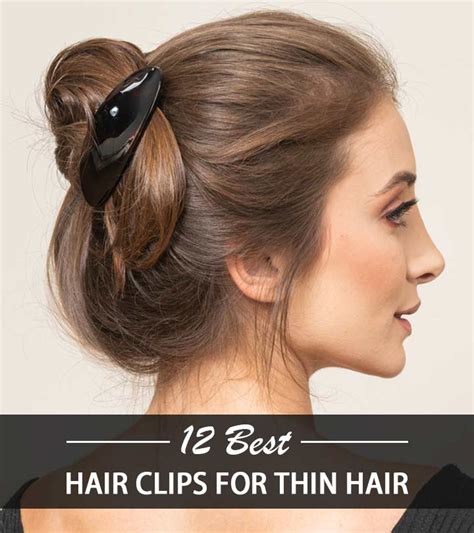The Pain Points of Thin Hair: A Growing Concern
According to the American Academy of Dermatology, over 50 million Americans experience hair loss, with women making up the majority. Thin hair is often a result of genetics, hormonal changes, or lifestyle factors such as stress and poor nutrition. For those with fine hair, styling can be a challenge, as traditional clips can slip out or weigh hair down.

The Motivations for Thin Hair Clips: A Revolutionary Solution
Thin hair clips address the unique needs of fine hair, offering a secure and lightweight hold. They come in various sizes, shapes, and materials, making them suitable for a wide range of hair types and styles.
Effective Strategies for Styling Thin Hair with Clips
1. Use Small, Discreet Clips:
Choose clips that are small and lightweight, such as bobby pins or micro clips. These will hold your hair securely without adding bulk.
2. Criss-Cross Clips:
For extra hold, criss-cross bobby pins or barrettes. This technique creates a more secure grip that prevents the clips from slipping out.
3. Sectioning and Pinning:
Section your hair into smaller areas and use clips to hold each section in place. This helps distribute the weight evenly and prevents the clips from becoming overwhelmed.
4. Add Texture:
Create volume and texture by teasing your hair at the roots before securing it with a clip. This gives the illusion of thicker hair.
5. Accessorize with Clips:
Decorative clips, such as bejeweled or patterned clips, can add a touch of style and personality to your hairstyle.
Tips and Tricks for Using Thin Hair Clips
- Use hairspray to set the clips in place and prevent them from slipping out.
- If you have very fine or slippery hair, apply a small amount of hairspray to the clips before inserting them into your hair.
- Avoid using too many clips, as this can weigh down your hair and make it look flat.
- Experiment with different placement techniques to find the most flattering styles for your face shape and hair type.
4 Useful Tables on Thin Hair Clips
Table 1: Thin Hair Clip Types
| Type | Description |
|---|---|
| Bobby pins | U-shaped metal pins |
| Micro clips | Small, spring-loaded clips |
| Barrettes | Decorative clips with a hinged opening |
| Claw clips | Clips with curved teeth that grip hair |
Table 2: Thin Hair Clip Materials
| Material | Pros | Cons |
|---|---|---|
| Metal | Durable, inexpensive | Can be heavy |
| Plastic | Lightweight, affordable | Can break easily |
| Acetate | Luxurious, eco-friendly | Expensive |
| Cellulose acetate | Lightweight, flexible | Can be fragile |
Table 3: Thin Hair Clip Sizes
| Size | Uses |
|---|---|
| Extra small (1-2 cm) | Securing small sections of hair, creating baby braids |
| Small (2-3 cm) | Holding back bangs, creating simple buns |
| Medium (3-4 cm) | Sectioning hair, creating half-up styles |
| Large (4-5 cm) | Holding large sections of hair, creating high buns |
Table 4: Common Thin Hair Clip Problems
| Problem | Solution |
|---|---|
| Clips slipping out | Use smaller clips, cross them over, or apply hairspray |
| Hair becoming weighed down | Use lightweight clips, avoid using too many, and apply less hairspray |
| Clips damaging hair | Use smooth, rounded clips and avoid pulling or snagging your hair |
